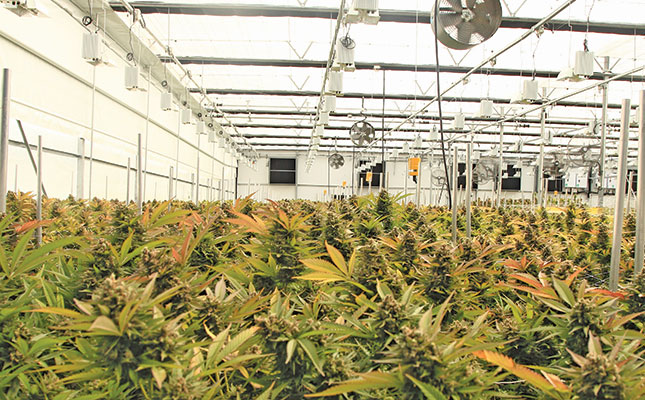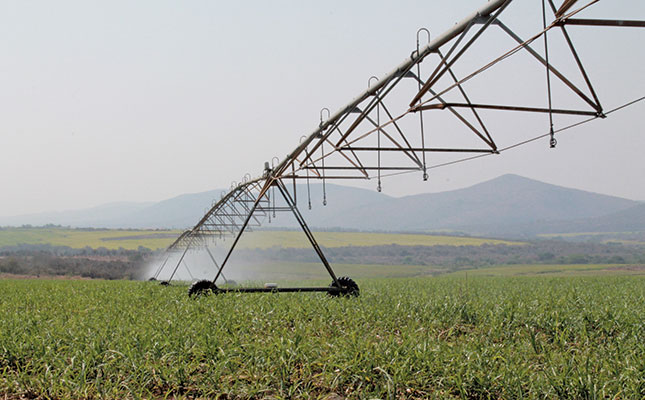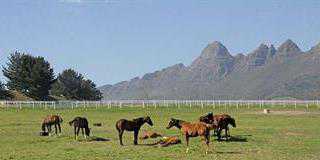
Photo: Glenneis Kriel
Cannabis has been touted as the next big money-spinner in agriculture, with many farmers looking for a way to cash in on this market. Producing medical cannabis, however, presents a number of hurdles, of which infrastructural cost and operating expenditure are probably the most daunting.
Michael Holmes, CEO of medical cannabis producer Neopharm, which is currently producing its first crop, says the first phase of his company’s investment in a 400m² production and processing facility the Cape Winelands cost close to R70 million. This was a staggering 200% more than they had envisaged.
He identifies security costs as one of the biggest drivers of unforeseen expenses.
“We had to fence in the facility and establish secure access control points. We invested in more than 80 security cameras and other technologies to enable the monitoring of activities in every single corner of the facility. The recorded activities are logged and stored for future reference.”
Operating costs are also exorbitant. Holmes explains that cannabis not only requires the right volumes of the right nutrients at the right time, but production is also greatly influenced by climatic conditions and light.
“Production needs to be climate-controlled to ensure a repeatable, standardised, high-quality end product. This significantly increases electricity costs and forces farmers to invest in backup energy sources to alleviate the impact of load-shedding.”
Aside from this, staff need to be employed to secure the facility and oversee production long before any income is generated from the crop.
While the return on investment can be huge, Holmes estimates that it takes approximately 24 months after the start of production to break even. The final time frame depends on the quality of the product, the skill of the production team, the production environment and the target market.
These sentiments are echoed by Leslie Zetler, CEO of Felbridge, a medical cannabis producer also based in the Cape Winelands. The company made history when it exported
South Africa’s first commercial batch of the product in June last year, but Zetler points out that the business built a 14 000m² production facility that opened back in 2019.
Felbridge’s equipment supplier and production adviser, James McGregor, CEO of Hydrobiz, says a cannabis farmer would be hard-pressed to get away with an investment of less than R10 million to cover infrastructure and operational costs until the investment starts to pay off.
“I see many people getting licences, but if they don’t invest in the right production equipment and plant material, they won’t hit the economies of scale required for financial viability,” he says.
On top of this, these investments are made blindly. Zetler explains that no clients will sign an offtake agreement until they have seen and tested the product.
Both Zetler and Holmes feel that cannabis market prices are highly inflated at the moment.
“Over time, prices will drop as cannabis becomes more commoditised, to the advantage of South African farmers, as our production costs are substantially lower than those of most developed countries. Production quality, nevertheless, will be paramount, as buyers and investors will source from other African or South American countries if we don’t meet their specifications,” says Zetler.
He adds that there is much informal collaboration between producers at the moment.
“We need to see the bigger picture and work together to establish South Africa as a preferred supplier of medical cannabis for the health and medical markets. Our main competition is other countries, not fellow South African cultivators.”
A demanding market
Cannabidiol (CBD) flowers grown for the health market have lower tetrahydrocannabinol (THC) levels (below 1%) than flowers sold for medical purposes and may be sold over the counter in various countries, including South Africa.
Neopharm, however, is establishing itself as a high-end producer of cannabis for the medical market, as production for this requires more skill and the market requirements are tighter than those for the health market.
“Cannabis aimed at the medical market has to comply with the same regulations as any other pharmaceutical product,” Holmes explains.
Felbridge has diversified market risk by securing a contract to propagate and distribute cannabis genetics belonging to Puregene in Switzerland and Perfect Plants in the Netherlands.
The company exported its first shipment of cannabis in-vitro tissue culture to North Macedonia in May 2021 and has also supplied various local licence holders with plant material.
“With a solid pipeline of genetically superior strains sourced from our production partners, we aim to become the leading provider of cannabis and hemp starter materials in Africa,” says Zetler.
He adds that the choice of genetics will depend on the offtake requirements and the area of production. “We’ve seen different genetics flourish in different areas, even though production is done under protection and in semi-controlled environments.”
Production
Karl Marais, head of production at Neopharm, says another challenge with cannabis cultivation is the absence of production data that is relevant to South Africa’s production conditions.
“The textbook on cannabis production still needs to be written, making it challenging for someone without comprehensive experience to cultivate the crop.”
Production at Neopharm is entirely hydroponic, and uses the Current Culture recirculating deep water culture set-up, with clay pebbles to keep the plants upright. Cultured Solutions in California in the US has customised a nutritional programme for Neopharm based on plant observations, plant tissue analysis and climatic conditions.
Marais explains that Neopharm’s first production facility, a sealed greenhouse, uses sunlight and supplementary LED lighting. The second facility, which is at the planning stage, measures 600m², and will use solely artificial lighting.
“The idea is to create an environment that will not be influenced by any external factors, so we can be in full control of climatic conditions and lighting. Having a controlled environment will also enable us to better measure the outcome of interventions,” says Marais.
The success and cost of production in the enclosed facility, which should be completed by the end of this year, will determine the type of facility that will be built in 2023. “We might end up building an open or closed facility, or split the 1 000m² into sections according to our requirements.”
Disease control
Another major challenge with cannabis, according to Zetler, is that the plants are susceptible to fungal diseases, aphids and leaf miners. It is therefore important to use genetics from a reliable source, as plant material may be infected with viruses.
No registered products exist to manage these problems and the market is generally wary about the use of chemicals, so it is better to avoid chemical products entirely.
“Production facilities need to be [a distance] from other commercial farms to prevent spray drift from becoming a problem. We use biological control measures, such as parasitic and predatory insects, to keep pests in check, and other natural products to enhance the health of the plants and nutritional uptake. People who enter and work in the facility also have to follow strict biosecurity protocols,” says Zetler.
Along with this, he adds, the plants need to be handled with great care, even more so than cut roses.
Licensing
Obtaining a licence to produce medical cannabis is a drawn-out affair, but not overly difficult, explains Zetler, adding that South Africa is probably the only country in the world where cultivators are required to draw up a production plan and build the entire facility before a licence is approved.
Felbridge applied for a licence in 2017 and had its first audit in 2018. Its licence was issued in 2019, whereafter it started producing medical cannabis on a small scale and systematically expanded production as the team became more adept.
“We didn’t have any nasty surprises during the audits. The first audit was basically to check whether we’d complied with regulations to produce medical cannabis and to identify any shortcomings. The second was to check whether we’d addressed those shortcomings.”
Neopharm will apply to expand production as it grows, which Holmes foresees being easier than applying for a new licence.
Zetler’s advice to farmers who want to start production is to ensure they have enough funding to support production and apply for a licence.
“Felbridge gets regular phone calls from farmers who’d like to produce cannabis. We’re able to help prospective licence holders by supplying them with genetics and connecting them with production consultants as well as licensing agents.”
Email Michael Holmes at [email protected], Karl Marais at [email protected], Leslie Zetler at [email protected], or James McGregor at [email protected].













